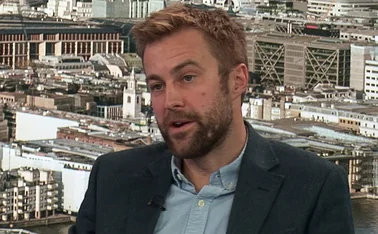
ESG Exchange Week: What is driving microinsurance growth?

Microinsurance could cover up to 2.5 billion people by 2030. As Edward Murray explains, digital resources and education through the Covid-19 pandemic have opened up the door for mainstream insurers to get involved in this market.

The Microinsurance Network recently published its latest research into the market: The Landscape of Microinsurance 2021, which highlighted continuing growth in the sector, and shone a light on its unrealised potential. The research found that up to 372 million people have some form of microinsurance – a type of protection for low income households or individuals – in the 30 countries covered by the report. This was an increase on the previous year’s report, which recorded up to 253 million people who had cover across 28 countries.
In part, the increase in the latest research comes from the addition of two extra countries, as well as from increased participation in the survey by sector stakeholders. However, the rise in numbers represents growing penetration, and the 2021 publication found that up to 14% of the target population were now covered; an increase from the 10% noted in the previous year.
Katherine Pulvermacher is the executive director of the Microinsurance Network, and she hopes to see the pace of penetration continue to increase in the coming years. Indeed, she believes it is possible for microinsurance to cover up to 2.5 billion people by 2030. Pulvermacher says this will require an ongoing annual increase of around 34% in each of the intervening years, but she is optimistic that such advances can be made.
Therefore, how can the market deliver this sort of growth, and what challenges will it need to overcome if it wants to extend its safety net to this number of people?
Current market make-up
In 2020, the total amount of microinsurance premiums collected was $1.129bn (£0.84bn). This was up from $1.06bn the previous year. However, the rise was subdued by a number of factors, according to the report. These included some currencies depreciating against the dollar, an increase in the number of lower-cost products bought, and a reduction in the number and size of loans taken out, to which microinsurance products are attached.
The Microinsurance Network is clear about the potential size of the market, and the report states: “The potential value of the microinsurance market in the countries included in this study is estimated at $19.4bn, based on the entire target population being covered by one insurance product.”
The potential value of the microinsurance market in the countries included in this study is estimated at $19.4bn, based on the entire target population being covered by one insurance product.
The Microinsurance Network
Past reports show that life and credit insurance policies were the products bought by the largest number of people. But its latest publication noted that the growing prevalence of healthcare policies.
It says: “This year, the numbers of lives covered through these lines of business [life and credit] remained fairly stable. However, health microinsurance became the largest product line in Africa and Asia, reaching 104 million people globally. The growth of health microinsurance has been an important trend for several years. Whereas life insurance was previously the ‘starter’ product for insurance providers looking to enter the low-income market, simple health products have now taken over in many countries as the first choice for insurers and fintechs launching new microinsurance schemes.”
The Microinsurance Network
The onset of Covid-19 heightened people’s awareness for healthcare products, and certainly had a part to play in this increased demand. But it also made distribution more difficult, and restricted people’s disposable incomes and their ability to pay, which also hampered the market in the short-term.
Richard Leftley, executive vice-president at micro insurer MIC Global, provides more detail on some of the immediate impacts of Covid-19 (see box, below), but what is for sure is that the pandemic exacerbated many of the long-standing challenges the microinsurance market has faced and underscored the need for innovative and digitised solutions to many of these entrenched problems. Digital advances can – and do – lower the cost of signing up customers, administering policies and paying claims. However, the technology cannot stand in isolation, especially as it is trying to reach people who do not have an established understanding of insurance, and how it could work for them.
Sabbir Patel, senior vice-president, emerging markets at the International Cooperative and Mutual Insurance Federation, explains: “Distribution has been a long-standing problem because of the cost of reaching people. If you are trying to do microinsurance on a sustainable basis then you will need to keep the premium down while still ensuring that the cover has an impact, so distribution is a big challenge… Technology is definitely a way to overcome the cost associated with that distribution.”
The immediate impact of Covid-19
Richard Leftley, executive vice-president at MIC Global, says: “When Covid-19 hit, MIC Global saw two things happen. The first was a significant increase in demand. We were selling insurance in two ways – one through call centre agents and the other through digital communication, which is typically called self-registration.
“We saw a 300% increase in the productivity of our agents, and we saw about an eight-fold increase in digital self-registration. The reason for that is because people became more aware that they might get sick, so there was a higher demand for the product.
“The second impact was that you could literally track national lockdowns through payment success. People pay for these products in very small instalments – daily, weekly or monthly – and when the lockdowns hit each country, people stopped working. If they were not working, they were not getting paid because they get paid on a day-rate basis.
“Therefore, while we saw an increase in the number of people signing up for insurance, there was then a massive fall off in their ability to pay for the product during lockdown because they either did not have any money on their various digital wallets, or they did not have any credit on their mobile phone.
“So, for the period of lockdown there was decrease in premium collection. But then as soon as lockdown ended and people went back to work, we were then able to collect the premiums from all those people.
“Overall, it has been positive from an insurance point of view and, interestingly, that has not really fallen away. People are still very mindful of the fact that they could get sick, with these various other waves of illness.”
Distribution by technology
However, using technology is only part of the puzzle. Patel adds: “The way we do it in the mutual and cooperative sector is to use the cooperative entities that are there on the ground to distribute the services that we would like to provide to these individuals. For us, we already have feet on the ground, which we then use to deliver microinsurance.”
As an example, the organisation might work with a local finance provider, enabling it to offer customers insurance as part of a credit arrangement. In short, it enables these organisation to expand their product offering to their existing customer base.
In addition to developing insurance product options, Patel says there is a need to deliver education so people understand what the insurance mechanism is about, and that it is something which can actually impact positively on their livelihood and increase their sense of protection and security. Without this understanding, experience has shown that it is very difficult to create any demand for the cover among local communities.
Another way to establish trust in microinsurance products is to ensure that the claims are simple to make, and also that they are paid promptly.
Annette Houtekamer is co-founder of IBISA, a network seeking to work with industry, community, government and commercial stakeholders and enable them to develop, deliver and administer microinsurance products for the agricultural sector.
Emphasising the importance of prompt claims payment, Houtekamer explains: “A few months after we set up our product in the Philippines, the typhoon struck [December 2021] ,and we were able to pay people within 10 days. People received the money straight into their bank accounts and this was something they had never experienced before.”
She would much rather the extreme weather had not occurred of course, but she says the quick payment of claims created trust and interest in the product, which she hopes will encourage more farmers to take out protection.
If you are trying to do microinsurance on a sustainable basis then you will need to keep the premium down while still ensuring that the cover has an impact, so distribution is a big challenge… Technology is definitely a way to overcome the cost associated with that distribution.
Sabbir Patel
Mainstream frustrations
Houtekamer has spent her career in the insurance market, and she has worked for mainstream carriers as well as start-ups. One of her frustrations is the pace at which the insurance market is moving, when it comes to developing and supporting the microinsurance solutions that are in the developing economies.
She says: “I do appreciate that carefulness is the way to survive in the insurance industry if you want to be there for hundreds of years. But climate change is going so much faster, and it is hurting the bottom of the pyramid more than it ever did before and jeopardising all of us. “
Those 500 million farmers [who are at the bottom of the pyramid] are responsible for around 70% to 80% of the food in the world, and so food security is an issue if their businesses fail.”
The good news, though, is that new entrants are shaking things up and accelerating the pace of change.
Leftley comments: “20 years ago, microinsurance covered 1% of the global population, and today it is around 5%, which is great progress.”
He says this progress has been delivered by the influx of specialist players, supported by new technology, that have refused to categorise low-income people in developing economies as high risk and uninsurable. Instead, they have worked out how to serve them effectively, and he believes the increasing number of successful projects is encouraging more insurers – both new and established – to view microinsurance as a business opportunity and not merely a corporate social responsibility initiative.
This is a view, which is also echoed by Pulvermacher, who understands the frustrations of rounding up multiple stakeholders to deliver successful microinsurance programmes, but who believes that there are examples the market can learn from and replicate.
For example, highlighting the work done by mainstream insurers, Pulvermacher says: “We have seen the emergence of the Insurance Development Forum, which has got some of the largest insurers and reinsurers in the world putting skin in the game, and they are trying to do it in a thoughtful way.”
Again, rebuffing some of the criticism that is aimed at regulators for not being proactive enough in accrediting new microinsurance programmes, Pulvermacher argues: “It is easy to blame regulators – it is easy to blame someone else. In this, everyone has a role to play in terms of making it happen and so to say it is the regulator’s fault is too easy.
“Kenya is a really good example, and the supervisor in Kenya has got a really good development mandate – and it has taken it very seriously.”
In this instance, Pulvermacher explains that it is the private market that is lagging behind and she adds: “Getting the private sector to get involved in Kenya has been more challenging, which is something the insurance association and the supervising authority are trying to promote.”
20 years ago, microinsurance covered 1% of the global population, and today it is around 5%, which is great progress.
Richard Leftley
Positive collaboration
Leftley says that the positive collaboration can lead to extraordinary results: “If you go to some countries like Ghana, for example, penetration is approaching nearly 20%. Whereas in other countries like India, it is still at 1%, and Nigeria, which is next door to Ghana, then the penetration is also less than 1%.
“The critical thing here is around where the market has enabled innovators to really gain a foothold. In Ghana, the regulator has worked with the industry and allowed companies like MIC Global to innovate.”
There is no doubt that all the tools required to design, distribute and administer a much wider international range of microinsurance programmes are available. In addition, accelerating climate change and the Covid-19 pandemic have emphasised the need for urgent action and driven demand for products to help people protect themselves.
Given that the countries covered by the report offer a potential premium income of almost £20bn, there is a significant commercial incentive to be able to hit Pulvermacher’s goal of growing the number of people that are covered by microinsurance to 2.5 billion by 2030.

Post’s ESG Exchange
This article is part of Post’s ESG Exchange from 7 to 18 March featuring free to access webinars, blogs and interviews focusing on ESG.
Today ESG is a powerful tool in the insurance industry, presenting both risks and opportunities for businesses. Register now to watch any of the ESG focused webinars, and have the opportunity to explore and look out for future content online.
- What do SMART environmental goals look like for the insurance industry?
- Implementing ESG practices across the insurance supply chain.
- What are some of the challenges in creating a more diverse workforce?
- Which area of business should you focus on first in implementing the ESG Agenda
- Will ESG reputation end up being one of the top attractions for insurers in terms of investments?
To register, please click here
Only users who have a paid subscription or are part of a corporate subscription are able to print or copy content.
To access these options, along with all other subscription benefits, please contact info@postonline.co.uk or view our subscription options here: http://subscriptions.postonline.co.uk/subscribe
You are currently unable to print this content. Please contact info@postonline.co.uk to find out more.
You are currently unable to copy this content. Please contact info@postonline.co.uk to find out more.
Copyright Infopro Digital Limited. All rights reserved.
You may share this content using our article tools. Printing this content is for the sole use of the Authorised User (named subscriber), as outlined in our terms and conditions - https://www.infopro-insight.com/terms-conditions/insight-subscriptions/
If you would like to purchase additional rights please email info@postonline.co.uk
Copyright Infopro Digital Limited. All rights reserved.
You may share this content using our article tools. Copying this content is for the sole use of the Authorised User (named subscriber), as outlined in our terms and conditions - https://www.infopro-insight.com/terms-conditions/insight-subscriptions/
If you would like to purchase additional rights please email info@postonline.co.uk
Most read
- LV’s Mike Crane leaves insurer
- RSA ‘pragmatic’ on product review as NIG acquisition completes
- Wakam looking to exploit ‘unlimited UK potential’ following regulator approval








